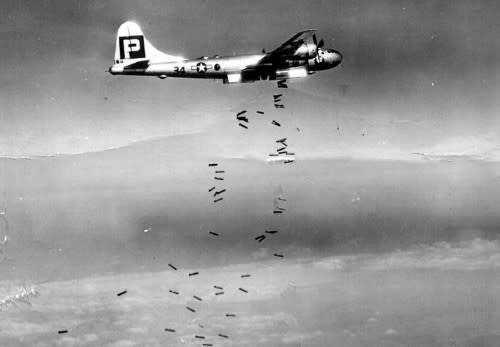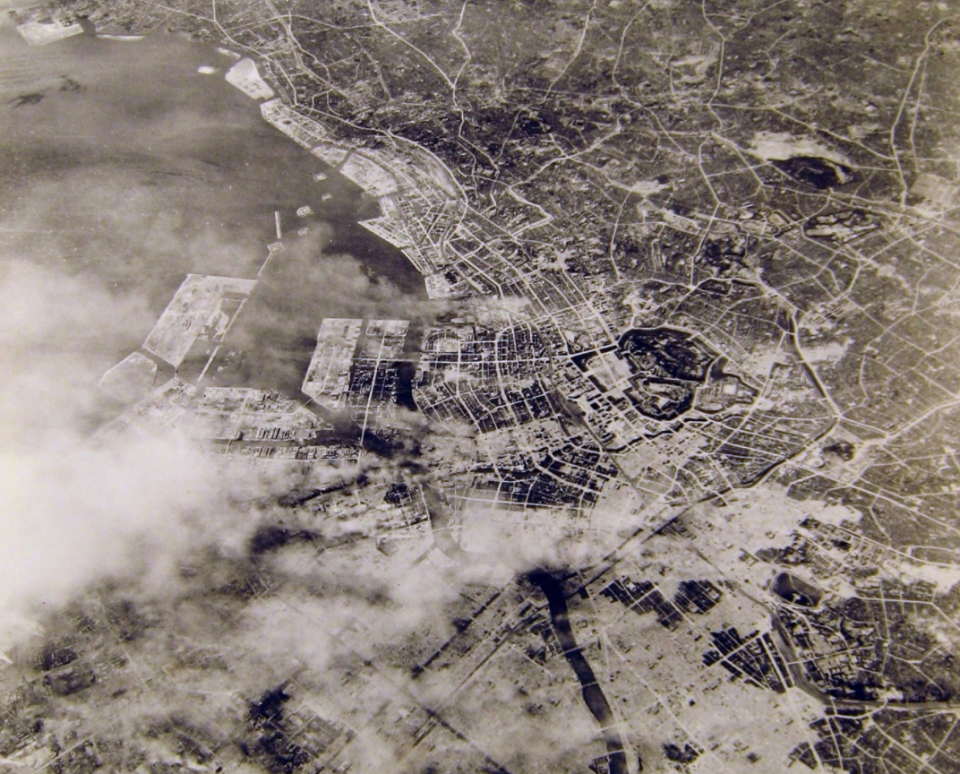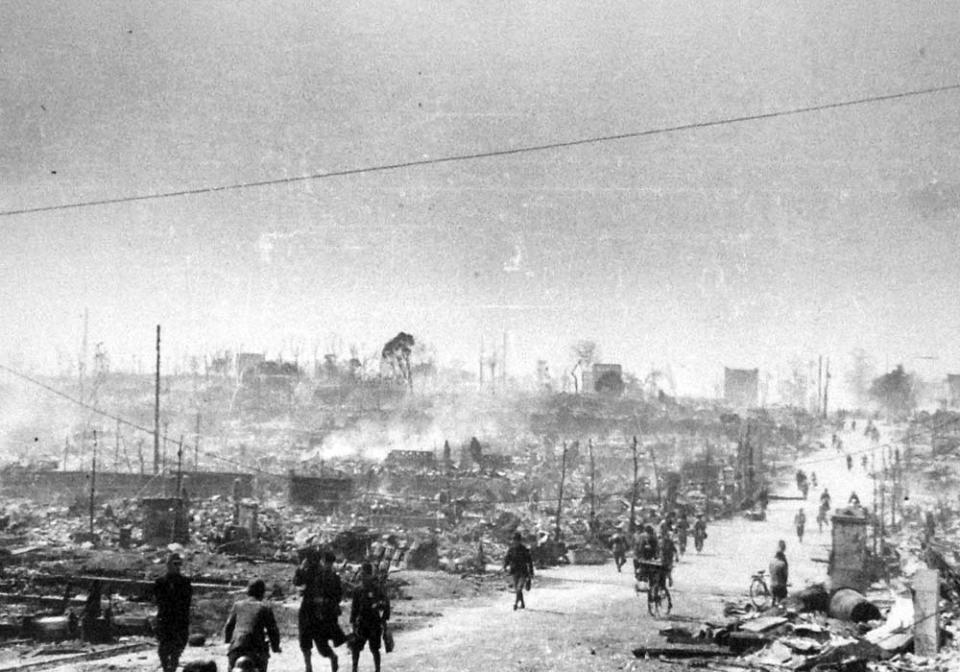The many ways that weather impacted the bombing of Tokyo during WWII

- Oops!Something went wrong.Please try again later.
This Day In Weather History is a daily podcast by Chris Mei from The Weather Network, featuring stories about people, communities and events and how weather impacted them.
--
Hansell versus weather.
Towards the end of 1944, Haywood S. Hansell, a Brigadier General with the United States Army Air Forces (USAAF), led the XXI Bomber Command. This unit was stationed in the Mariana Islands, located south-southeast of Japan, tasked with strategic bombing during World War II.
The XXI Bomber Command had several missions to destroy Japanese areas including aircraft plants. Some missions were successful, but overall, persistent thick clouds and high winds made it difficult for their precision bombing campaign.

"A B-29 dropping conventional bombs over Japan. The bombs are being scattered by the wind, a common occurrence which made precision bombing difficult." Courtesy of US Army Air Forces
Even before getting to their target, the mission's forces faced severe weather on their journey from the Mariana Islands to Japan, which broke up formation and caused navigation issues.
Hansell was out and replaced with Major General Curtis LeMay.
LeMay has already replaced a General who underperformed in a precision attack, so he seemed to be the man for the job.
LeMay decided that precision bombing of Japanese industrial targets would be too difficult considering the country's weather conditions. The jet stream and persistent clouds made it difficult to aim bombs from high above the targets.
So, LeMay focused on attacks on Japanese cities.
LeMay decided to attack Tokyo at night on Mar. 9, 1945; the weather conditions in Tokyo were better at night and the planes' LORAN systems (long-range navigation) worked better after dusk.
Click here to subscribe to This Day in Weather History
The planes were also told to drop bombs on the city from a lower altitude to improve accuracy (and so they could hold more bombs).
LeMay made other strategic decisions that all led to each plane being able to increase their bomb load.
The result.
The mission started on Mar. 9, 1945, and continued into Mar. 10. Three hundred American bombers dropped almost 2,000 tons of incendiaries on Tokyo, Japan. A large portion of the city was destroyed, including 100,000 civilians.

A USAAF reconnaissance photograph of Tokyo taken on Mar. 10, 1945. Part of the area destroyed by the raid is visible at the bottom of the picture. Courtesy of US Army Air Forces
Most people died from carbon monoxide poisoning, as the city was in flames. Other people died directly from the fire and other tragic ways.
It was almost another six months before Japan surrendered and WWII ended.

A road in Tokyo which was destroyed in the Mar. 10, 1945 air raid. Courtesy of Wikipedia
To hear more about the bombing of Tokyo, listen to today's episode of "This Day In Weather History."
Subscribe to 'This Day in Weather History': Apple Podcasts | Amazon Alexa | Google Assistant | Spotify | Google Podcasts | iHeartRadio | Overcast'
Thumbnail: "A B-29 dropping conventional bombs over Japan. The bombs are being scattered by the wind, a common occurrence which made precision bombing difficult." Courtesy of US Army Air Forces

